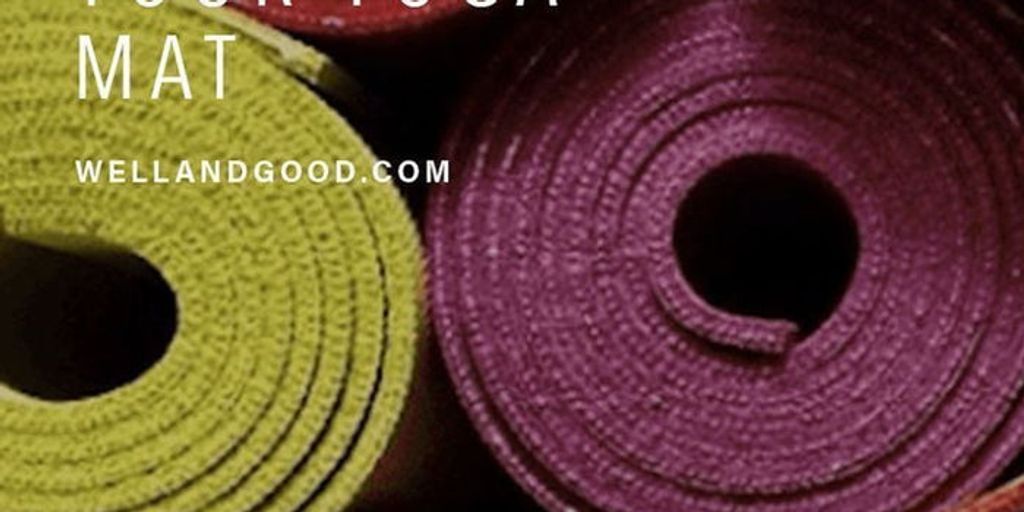
The Ultimate Guide on How to Clean a Yoga Mat: Tips and Tricks
Keeping your yoga mat clean is really important. It helps you stay healthy and makes your mat last longer. This guide will show you easy ways to clean your mat, what supplies you need, and how to store it properly. You'll also learn about natural cleaning solutions and how often you should clean your mat. Let's get started!
Key Takeaways
- Cleaning your yoga mat keeps you healthy by getting rid of germs and dirt.
- Using the right supplies and techniques can make your mat last longer.
- Natural solutions like vinegar and essential oils are great for cleaning your mat.
- Knowing how often to clean your mat depends on how much you use it.
- Proper storage after cleaning helps keep your mat in good shape.
Why It's Important to Clean Your Yoga Mat
Health Benefits of a Clean Yoga Mat
Keeping your yoga mat clean is crucial for your health. A dirty mat can harbor bacteria and germs, which can lead to skin infections or other health issues. Regular cleaning ensures a safe practice surface, making your yoga sessions more enjoyable.
Impact on Mat Longevity
Cleaning your mat regularly can extend its life. Dirt and sweat can break down the material over time, causing it to wear out faster. By maintaining your mat, you not only keep it looking good but also save money in the long run.
Preventing Unpleasant Odors
Nobody likes a smelly yoga mat. Sweat and dirt can cause unpleasant odors to develop. A clean mat smells fresh and makes your practice more pleasant. Plus, it shows respect for your practice space and fellow yogis.
Materials You'll Need for Cleaning
Essential Cleaning Supplies
To clean your yoga mat, you'll need a few basic items. Start with a soft cloth or sponge to avoid damaging the mat's surface. A mild dish soap mixed with water works well for most mats. You might also need a spray bottle to apply the cleaning solution evenly. Don't forget a clean towel for drying the mat afterward.
Optional Add-ons for Extra Care
For those who want to go the extra mile, consider adding a few more items to your cleaning kit. Essential oils like tea tree oil can add a pleasant scent and extra disinfecting power. A small brush can help scrub away stubborn dirt. You might also want to use disinfectant wipes or sprays for a quick clean.
Choosing the Right Cleaning Solution
Not all cleaning solutions are suitable for every mat. While vinegar, dish soap, and tea tree oil are commonly used in DIY cleaning solutions, they may not be appropriate for all mats. Always check the manufacturer's guidelines before using any cleaning product. If you're unsure, a mild soap and water solution is usually a safe bet.
Keeping your yoga mat clean not only helps maintain its quality but also ensures a healthier practice environment.
Step-by-Step Guide to Cleaning Your Yoga Mat
Preparing Your Mat for Cleaning
Before you start, make sure to gather all your cleaning supplies. Lay your mat flat on a clean surface. Remove any loose dirt or debris by shaking or brushing it off. This will make the cleaning process more effective.
Deep Cleaning Techniques
For a thorough clean, mix a solution of mild soap and water. Use a soft cloth or sponge to scrub the mat gently. Pay special attention to any stained or dirty areas. Rinse the mat with clean water to remove any soap residue.
Deep cleaning your mat regularly helps maintain its hygiene and extends its lifespan.
Quick Cleaning Tips for Busy Schedules
If you're short on time, a quick wipe-down can suffice. Use a pre-made yoga mat cleaner or a DIY spray made from water and a few drops of essential oil. Spray the solution lightly on the mat and wipe it down with a clean cloth. This method is great for keeping your mat fresh between deep cleans.
Natural Cleaning Solutions for Your Yoga Mat
Using Vinegar and Water
A simple and effective way to clean your yoga mat is by using a mixture of vinegar and water. Vinegar is a natural disinfectant that helps kill germs and bacteria. To make this solution, mix equal parts of water and white vinegar in a spray bottle. Lightly spray your mat and wipe it down with a clean cloth. This method is not only easy but also eco-friendly.
Benefits of Essential Oils
Adding essential oils to your cleaning routine can provide extra benefits. Essential oils like tea tree oil and lavender have natural antibacterial properties. They also leave a pleasant scent on your mat. Just add a few drops to your vinegar and water solution for an enhanced cleaning experience. Remember, a little goes a long way with essential oils.
DIY Cleaning Sprays
Creating your own cleaning spray is a fun and customizable way to keep your yoga mat fresh. You can mix ingredients like water, vinegar, and essential oils to make a spray that suits your needs. Here's a simple recipe:
- 1 cup of water
- 1 cup of white vinegar
- 5-10 drops of essential oil (like tea tree or lavender)
Combine these ingredients in a spray bottle, shake well, and you're ready to go. This DIY spray is not only effective but also cost-efficient.
How Often Should You Clean Your Yoga Mat?
Factors That Influence Cleaning Frequency
Several factors determine how often you should clean your yoga mat. Your practice frequency is a major one. If you practice daily, you should clean your mat more often. The environment also matters. Practicing outdoors or in a hot yoga studio can make your mat dirty faster. Lastly, your personal hygiene habits play a role. If you sweat a lot, you might need to clean your mat more frequently.
Signs Your Mat Needs Cleaning
There are clear signs that your mat needs cleaning. If it starts to smell bad, it's time for a wash. Visible dirt or stains are also indicators. Additionally, if you notice your mat becoming slippery, it might be due to a buildup of sweat and oils.
Establishing a Cleaning Routine
Creating a cleaning routine is simple. Aim to wipe down your mat after each practice. For a deeper clean, do it once a week if you practice regularly. Use a gentle cleaner to avoid damaging the mat. Consistency is key to keeping your mat in good shape.
Regular cleaning not only keeps your mat fresh but also extends its lifespan. A clean mat provides a better grip and a more enjoyable practice.
Storing Your Yoga Mat After Cleaning
Proper Drying Techniques
After cleaning your yoga mat, it's crucial to let it dry completely before storing it. Damp mats can become a breeding ground for mold and bacteria. To dry your mat, you can hang it over a shower rod or lay it flat in a well-ventilated area. Avoid direct sunlight as it can damage the material.
Best Storage Practices
Once your mat is dry, roll it up loosely rather than folding it. This helps prevent creases and keeps the mat in good shape. Store your mat in a cool, dry place. If you have a yoga mat bag, use it to protect your mat from dust and dirt.
Avoiding Common Storage Mistakes
- Don't store your mat in a hot car or near a heat source, as this can cause the material to break down.
- Avoid placing heavy objects on top of your mat to prevent it from getting squished or deformed.
- Never store your mat while it's still damp, as this can lead to unpleasant odors and mold growth.
Taking a few extra minutes to store your yoga mat properly can extend its life and keep it fresh for your next practice.
Special Considerations for Different Types of Yoga Mats
When it comes to cleaning yoga mats, different materials require different care. Here are some tips for various types of mats to ensure they stay in top condition.
Cleaning Rubber Mats
Rubber mats are popular for their durability and grip. To clean a rubber mat, use a mixture of water and mild soap. Avoid using harsh chemicals as they can damage the material. After cleaning, rinse thoroughly and let it air dry.
Cleaning PVC Mats
PVC mats are common and affordable. They can handle a bit more scrubbing compared to rubber mats. Use a gentle cleaning solution and a soft cloth. Make sure to rinse well to remove any soap residue. Drying these mats properly is crucial to prevent mold and mildew.
Cleaning Eco-Friendly Mats
Eco-friendly mats are made from natural materials like jute or cork. These mats need special care to maintain their quality. Use a natural cleaning solution, such as a mix of vinegar and water. Avoid soaking the mat; instead, wipe it down gently. Let it air dry completely before rolling it up.
Taking care of your yoga mat based on its material will help it last longer and keep it in good condition for your practice.
When choosing a yoga mat, it's important to consider the different types available. Each type has its own benefits and is suited for different needs. Whether you prefer natural rubber, eco-friendly, or foldable mats, we have something for everyone. To explore our full range and find the perfect mat for your practice, visit our website today!
Conclusion
Keeping your yoga mat clean is important for both your health and your practice. By following the tips and tricks in this guide, you can make sure your mat stays fresh and lasts longer. Regular cleaning helps get rid of dirt, sweat, and germs, making your yoga sessions more enjoyable. Plus, a clean mat can help you stay focused and relaxed during your practice. So, take a few minutes after each session to clean your mat. Your body and mind will thank you!
Frequently Asked Questions
Why should I clean my yoga mat regularly?
Regular cleaning of your yoga mat helps remove sweat, dirt, and bacteria, keeping it fresh and safe for use.
What supplies do I need to clean my yoga mat?
You'll need water, mild soap or a yoga mat cleaner, a soft cloth or sponge, and a towel for drying.
Can I use vinegar to clean my yoga mat?
Yes, a mixture of vinegar and water is a natural and effective way to clean your yoga mat.
How often should I deep clean my yoga mat?
Deep cleaning your yoga mat once a month is a good practice, but you may need to do it more often if you use it frequently.
How do I dry my yoga mat after cleaning?
After cleaning, lay your mat flat or hang it up to air dry completely before rolling it up for storage.
Can I clean all types of yoga mats the same way?
No, different materials need different care. For example, rubber mats and PVC mats have specific cleaning instructions.


